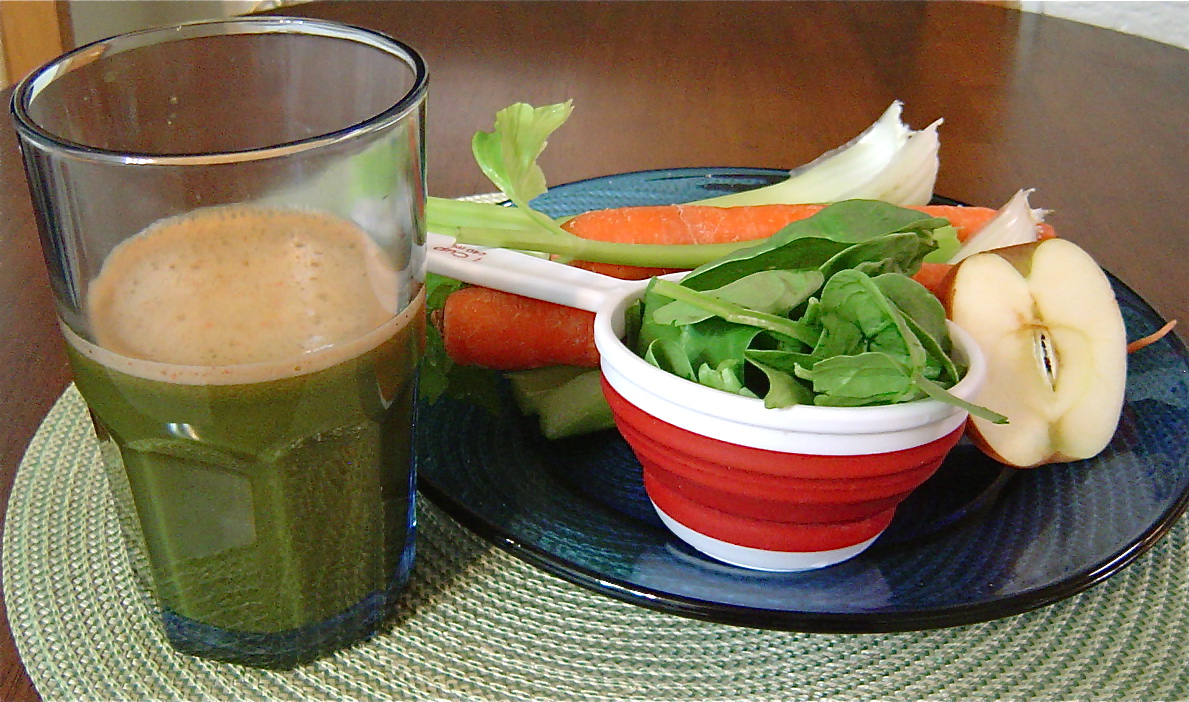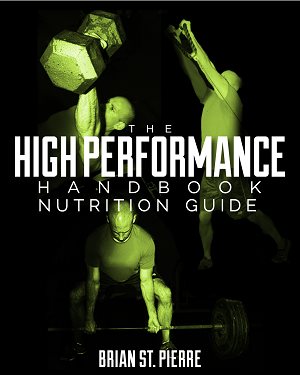Filed under: General Health
Hi Brian,
I was curious to know your opinion/ advice on the whole aluminum in grooming products and its effect on our bodies. Also, I try to follow your recommendation for avoiding products with fragrance and would like to know which grooming products, shampoo, soap, etc. you use?
This question was in response to my recent post One More Reason to Go Green, and Do Your Research, and it is a good one. To be completely honest I haven’t really looked into the whole aluminum in grooming products thing thoroughly, though it is certainly on my agenda! As much I would love to address this here, after some initial digging it requires more research on my part to give a solid answer, if one can even be given. My initial glance hasn’t found the data convincing in either direction.

As for grooming products such as soap, I personally use Dove Sensitive Skin Unscented, as it is fragrance free. Many of the chemicals in grooming products go far, far beyond my limited expertise in the area so I would love it if others could chip in with evidence-based thoughts on the topic.
In general I tend to err on the side of caution and believe in the “better safe than sorry” approach, however it is also important to keep in mind that “the poison is in the dose.” Meaning that occasional exposure to many potentially harmful things is often not something to concern yourself with (unless it is something like airborne asbestos) simply because the amount of exposure is far below what is necessary to cause harm.

Some things that I use around the home that I consider worth it are Seventh Generation hand soaps. We usually go with the Just Clean option, though they do have some that are scented with essential oils (not “fragrance”), I just find that they seem to dry my hands out a little. We also use their Free & Clear dishwashing soap. I steer clear of anti-bacterial soaps as much as I can as triclosan is considered carcinogenic, which is the same reason we do not use Colgate Total toothpaste as that is it’s active ingredient.
Fore more information on healthier products, check out The Environmental Working Group’s Skin Deep Cosmetic Database with more than 69,000 products rated for their safety. For example my soap above gets a score of 2, which is very good.
Filed under: General Health, Nutrition, Training
Well I am back from sunny Florida, and fortunately it was nearly 7o here in Maine yesterday so that was nice to return to! I mentioned the other day that I was able to get some reading done while on the beach that I had been meaning to get to for a long time. One such book was sent to me by a reader that I have been meaning to read for a while, Biology for Bodybuilders.

In this book Doug Miller, a champion drug-free bodybuilder, shares his nutrition strategies and the science behind them that have helped him be so successful. Overall I think this book is a nice look into the mindset of someone who has achieved such an incredible physique, and while I don’t agree with all of his strategies Doug does a good job of repeatedly mentioning that this is what works for him and what works for you may be different.
One particular piece in the book really struck me, and probably not even something that occurred to him, was when Doug mentioned that he sticks to an eating routine (something I have blogged about before), and he does so not only to keep things simple, but to decrease the stress in his life. He has a stressful job and trains hard, so eating mostly the same things everyday is not only practical from a time management standpoint (something else I have written about, here and here) he also views it as a strategy to decrease stress in his life. This was not an angle I had considered before, but when I read it it just struck me as incredibly true.
When you have a healthy eating routine you don’t have to worry and stress over what you are making, what you need to buy, etc. It just one more way to remove a potentially stressful situation from your life. We make hundreds of decisions every day related to food, so by having a routine you make the majority of these decisions ahead of time. This was one of those aha moments when you are reading a book that you are just amazed at how simple it is, and can’t believe you didn’t think of it yourself. Biology for Bodybuilders is a nice look into Doug’s mindset and definitely worth a read.
Filed under: General Health
Though I am still on vacation I wanted to quickly touch on an article I came across while reading the news this morning. It was a piece on aol.com called It’s Not Easy Breathing Green, and it brought up some interesting information on a recently conducted study.
The researchers at Silent Spring looked at 42 conventional products and 43 “green” products to determine their chemical content and whether they contain compounds that are known hormone disruptors (which may affect cancer risk, growth, and reproduction) as well as triggers for asthma. All 42 conventional products contained potentially harmful chemicals, and 32 of the 43 “green” products did as well. Interestingly many of these compounds were not listed on the ingredients label.
They found the highest concentrations in vinyl products, such as shower curtains and pillow protectors, and fragranced products, such as dryer sheets, and sunscreens. Recall how I recently blogged about the term “fragrance” on bottles can be as many as 200 different chemicals which the companies do not have to specify.
Silent Spring Institute’s earlier research, as well as the Centers for Disease Control’s biomonitoring studies, have found many of the study chemicals in people’s homes and bodies. Now this study adds information about where the exposures are coming from in everyday products.
Here are the tips the researchers recommend to reduce your exposure:
- Using fewer products
- Exercising caution with products applied directly to the skin and products used indoors, where chemicals accumulate in the air and dust
- Avoiding vinyl products, products containing fragrances, and anti-bacterials (triclosan and triclocarban)
- Using soap and water for cleaning
- Getting involved in local and national efforts to modernize chemical safety testing to keep harmful chemicals out of products in the first place.

I would like to add to that a bit to make it a little more applicable. For example I am currently in sunny Florida, and after doing some research on the Environmental Working Group’s exhaustive Sunscreen Guide, purchased BurnOut Ocean-Tested Physical Sunscreen SPF 30+. It has been fantastic. It is a pure physical sunscreen without any chemical UV absorbers. It is paraben-free, phthalate-free, fragrance-free, petroleum-free, biodegradable and ocean safe. Not too mention that is has worked incredibly well, goes on smooth without leaving a chalky white residue (like many zinc oxide products) and has kept my wife and I sunburn free.
Avoiding products with the term fragrance is pretty easy and will be a big part of keeping your indoor air as well as your skin clear of harmful chemicals.
For further reading check out these other posts:
Dangerous Dryer Sheets
The Dangers & Solutions of Indoor Air Pollution
How to Use Less Plastic
Should You Filter Your Drinking Water?
President’s Cancer Panel Report
EPA Building List of Potentially Dangerous Chemicals
Filed under: General Health, Nutrition
I apologize for the lack of posts, but I am currently on vacation in sunny Florida. A reader and former client of mine at CP sent me an article that I think will interest many of you titled Is Diet Soda Addictive?
This vacation has been wonderfully relaxing and I have been able to finish some books that I have been working on for a very long time. I haven’t been able to read so much in years!
I promise some actual content upon my return.
Filed under: General Health, Nutrition
Recently quite a few fitness experts have espoused the benefits of juicing. While I do agree that it can be a good way to increase your produce consumption, if not done correctly it can end up just being an increase in sugar intake with much of the benefits of produce consumption conspicuously absent.
If you are using a juicer that removes the pulp of the fruit or vegetable then you are missing out on the benefits of the entire food – the fiber, some vitamins and minerals and even much of the phytonutrients and antioxidants – while giving you a more concentrated sugar intake. In my opinion that is not a winning combination.

If you are going to juice produce I would recommend using something like a Vitamix or other high-powered blender that will completely liquify the entire produce so you aren’t just getting the juice and sugar. In addition if you are simply blending the entire thing for added produce to your meals then that is totally cool as long as you keep the calorie content in check. If you are doing this as a meal replacement then I would certainly encourage you to add a quality protein and some healthy fats and not do so for more than 1 meal per day, 2 at most on a day where you need something quick.
In the end even if you are blending the entire fruit and/or vegetable, juicing is not the be all end all, it is simply a nice adjunct to a balanced diet based on real, whole, minimally-processed plant and animal foods.
Filed under: General Health, Nutrition
In the past I have written about protein bars that I think are an acceptable part of your dietary intake from time to time. These would include JayBars, YouBars and VPX Zero Impact Bars. Well a client referred me to a new bar on the market that I tested myself and thought was quite good – Quest All-Natural Protein Bars.
They are higher in protein than either the JayBars or Youbars, contain no artificial sweeteners and is made from mostly real foods. Not to mention they taste pretty good to boot!

They are sweetened with stevia, Lo Han Guo and erythritol. Now some of you may have noticed that erythritol is a sugar alcohol, and that makes many people nervous. Fortunately erythritol is different from most sugar alcohols. Rather than the usual 2.4kcal/g of sugar alcohols it only supplies 0.2kcal/g. In addition 90% of it is absorbed by the small intestine and is excreted in the urine and feces, so the majority of it does not pass to the colon and cause GI upset (ie – diarrhea) like most sugar alcohols.
Lo Han Guo is another natural sweetener, actually a fruit from China, and is 300 times sweeter than sugar. Due to its high level of sweetness less is needed so it makes a lower-calorie option. It has been used for approximately 1000 years in China for a multitude of purposes.
In addition the bars contain 17g of fiber, mostly from isomalto-oligosaccharides (IMO), a prebiotic fiber. While those 17g may scare you away and think you will get a ton of gas, or the prebiotic fiber part may cause the same fear (as the prebiotic inulin is certainly known to cause gas in some people), fortunately for you this prebiotic is a different beast than inulin and is known to cause little gas. IMO naturally occurs in honey, miso and soy sauce and it also provides a level of sweetness for the bar as well. It is digestion resistant and passes into the colon where it is fermented by Bifidobacterium (healthy bacteria), producing short-chain fatty acids, decreasing luminal pH, and inhibiting the growth of dangerous bacteria.

Having said all of these wonderful things about these bars, and I didn’t even mention the benefits of its whey protein, I would not recommend consuming this bar or any other on a daily basis. In my mind protein bars should be used only when needed, not as an intentional part of your daily intake, as you are always better off with a completely real food meal. However they work great when you are caught in a pinch or have to eat on the road. They travel well, provide quality protein, healthy fats and are made from quality ingredients. Have a bar with a piece of fruit and some nuts and you have a very tasty and high-quality snack.
Filed under: General Health, Nutrition
I recently did an interview with Danny McLarty which covers a lot of topics that I get questions on everyday, so be sure to check it out!
Interview with Brian St. Pierre
In addition a former client of mine sent me a link to this video of the Today Show, where they had tested a bunch of home water filtration systems to see which ones were the most effective. Definitely interesting stuff and further proof that it is in your best interests to filter your drinking water, whether public or private.
Filed under: General Health
While my main area of focus is nutrition, and to a slightly lesser extent training, I do like to think of myself as having a broad scope of knowledge in many areas that affect our health, and certainly a passionate interest. I wrote a piece a while back called The Dangers & Solutions of Indoor Air Pollution, which is one of my favorites as I feel it highlights some relatively unknown areas of our lives that could be significantly impacting our health, as well as what to do about it.

Well in that same vein some recent research caught my attention. Dr. Anne Steinemann and colleagues at the University of Washington ran tests of scented laundry detergent and dryer sheets and then measured the gases being emitted from the dryer vent for possible carcinogens and health hazards. What they found may surprise you.
The first set of laundry that they ran used no products at all. The next used a leading brand of scented laundry detergent, but no dyer sheets in the dryer. The final test got both the detergent and the dryer sheets.
What the researchers found was 25 volatile organic compounds (VOCs), which are chemicals that can cause long-term health effects. In addition the EPA classifies seven of these particular VOCs as hazardous air pollutants, and two of them as carcinogens with no safe level of exposure (acetaldehyde and benzene). Even when there weren’t any products in use the vents gave off some VOCs, probably due to the fact that theses were machines in people’s houses and there was some residual matter from previous laundry cycles. When the laundry detergent was added it was much worse, adding 10 new VOCs. When both the scented laundry detergent and the scented dryer sheets were used created by far the worst situation, emitting acetaldehyde, acetone, benzaldehyde, hexanol and many many more hazardous chemicals. Even worse the carcinogenic acetaldehyde was among those with the highest concentrations.
The researchers estimate that emissions from dryer vents to equal about 6 percent of the emissions of carcinogenic acetaldehyde from automobiles. While seemingly small, it is also a much more direct exposure, especially if you are venting into your basement or garage. Unfortunately you won’t find these compounds on the ingredients list. The word “fragrance” as a single ingredient can actually contain up to 200 chemicals! It is also proprietary information, does not need to be listed and is not regulated.

While getting into a discussion on the fact that the emissions from our dryers is a totally unregulated problem is beyond the scope of this blog, the bottom line is your best bet would be to use an unscented, hypoallergenic “natural” laundry detergent, I like Seventh Generation Free & Clear personally, along with an unscented and fragrance free dryer sheet. No your clothes may not have that April fresh scent, but at least they will be far less likely to pose any health risk. Certainly seems like a worthy trade-off to me.
Filed under: Uncategorized
I realize my blogging has been lagging lately due to spending an inordinate amount of time on my thesis. Unless you guys want to learn about the starch and fructan content as well as the ORAC value and free phenolic content of hard red spring wheat grown in different soils, under different conditions with different amounts of nitrogen added? Any takers? Didn’t think so.
Doing research has certainly been enlightening, and doing research on ORAC values has definitely been eye-opening. I can tell you first-hand that it is not a great measure of the antioxidant capacity of food. This is mainly because the procedure is just so sensitive! It is incredibly dependent on the skill of the technician, and the temperature of the plates that it can be highly variable. The take home point is that while ORAC is nice, it is just one facet of the story of a food’s worth and only one measure of it’s antioxidant abilities.
I can also tell you that while I have enjoyed my time in the lab (for the most part), being a researcher is not my cup of tea. I prefer to work with people and teach them how to change their lives and reach their goals rather than measuring the moisture content of wheat, no matter how exciting that is! Note the sarcasm.
I promise to continue to provide as much kick-ass content as I can, it just might be less often than it had been for a little while. Please bear with me.
Filed under: Uncategorized
Currently over at precisionnutrition.com they are sharing a video series from a talk JB gave at Perform Better last year. To be honest I think this is some of the most important information I have ever heard. While that may seem over the top, I assure it’s not.
JB is explaining why understanding physiology is not enough. As he put it (about it himself but I feel it applies to most of us in this industry) – we are hobbyists trying to be professionals. How can we teach people to change when we have never been taught how to do so? There is far more to getting people fit and healthy than just knowing the physiology of how to do so, which is what we are taught. You must understand the psychology of getting your clients to buy into your program and consistently do what needs to be done.
I highly recommend you check it out whether you are a fitness professional or not. Even if you are just someone who loves fitness and nutrition but doesn’t practice it professionally, I assure you that you will take away some incredibly helpful material from these videos. Plus they are just freely posted on their site, no sign-up or membership required.
Precision Nutrition Compliance Solution












Posted on March 16th, 2012 by Brian St. Pierre
3 Comments »